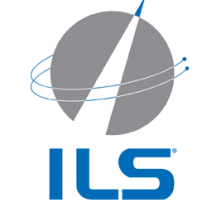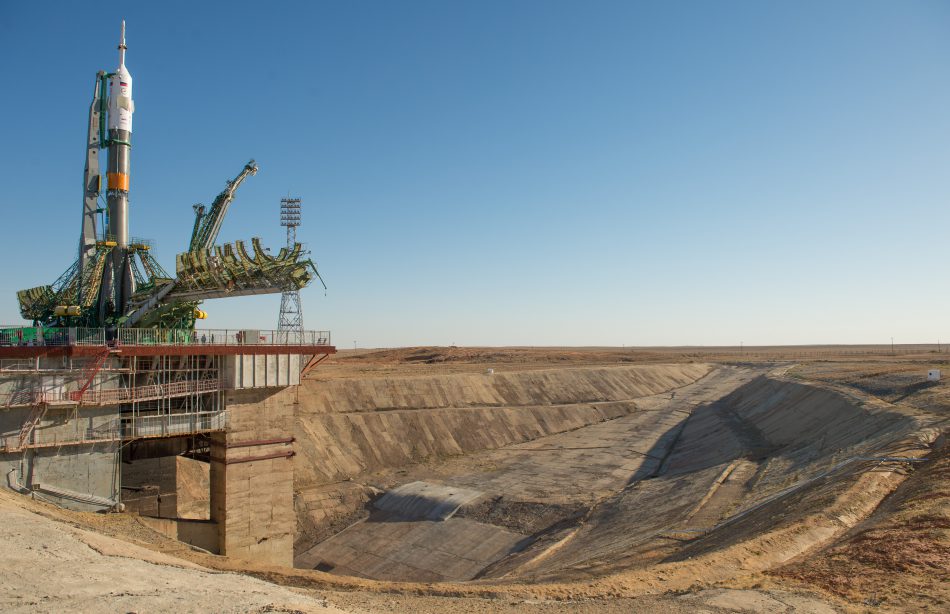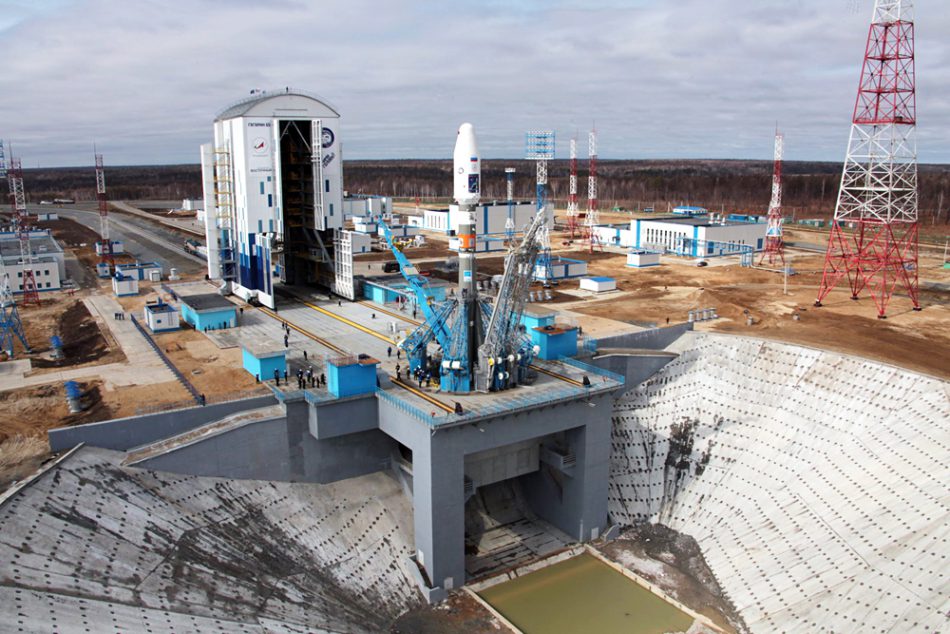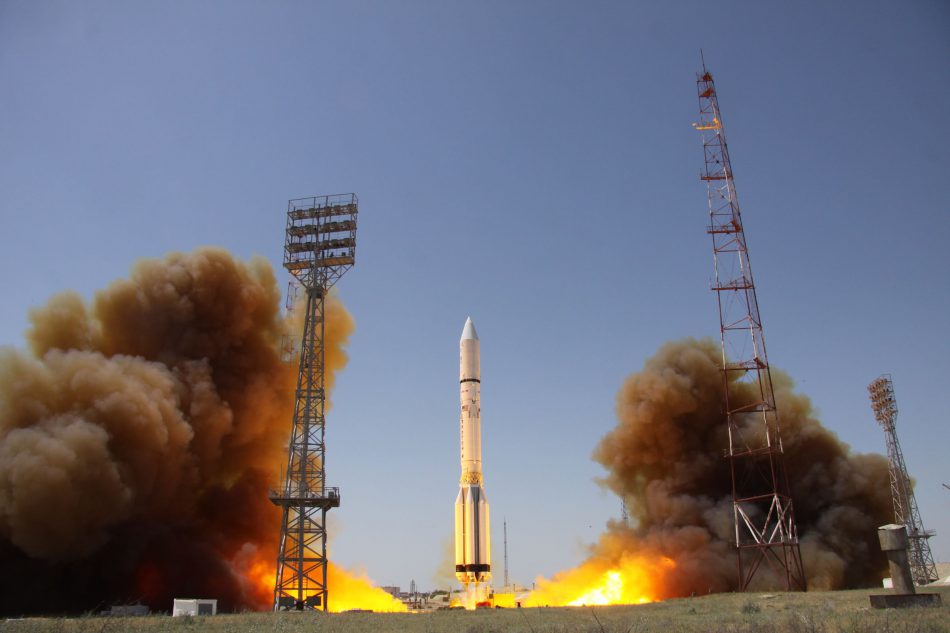
Back to selection

Supplier
ILS
International Launch Services, Inc.
12110 Sunset Hills Road
Suite 450
Reston, VA 20190
USA
International Launch Services (ILS) is providing launch services for global satellite operators and offers a complete array of services and support, from contract signing through mission management and on-orbit delivery. ILS has exclusive rights to market Proton launch services for commercial and civil satellite programs worldwide. ILS markets also the Angara 1.2 rocket for launch services to global commercial and governmental customers for Low Earth Orbit (LEO) satellites.
ILS was founded in 1995 and is a subsidiary of Khrunichev State Research & Production Space Center (Khrunichev) is headquartered in Reston, VA, near Washington, D.C. comprised of about 30 professionals and provides sales, marketing, mission management, launch operations, legal, licensing, and technical translation services.
Company History
ILS was formed in 1995 as a private spaceflight partnership between Lockheed Martin, Khrunichev and RSC Energia. ILS initially co-marketed non-military launches on both the US Atlas and the Russian Proton launch vehicles.
With the Atlas V launch of the SES-1KR satellite for satellite operator SES on April 20, 2006, ILS had made 100 launches, 97 of which were successful.
In September 2006, Lockheed Martin announced its intention to sell its ownership interests in Lockheed Khrunichev Energia International, Inc. (LKEI) and ILS International Launch Services, Inc. (ILS) to Space Transport Inc. that was formed specifically for this transaction by Mario Lemme.
The transaction between Lockheed Martin and Space Transport Inc. was completed in October 2006. Lockheed Martin has retained all rights related to marketing the commercial Atlas vehicle and is continuing to offer Atlas launch services to the worldwide commercial market through its subsidiary, Lockheed Martin Commercial Launch Services, Inc. (LMCLS). ILS, no longer affiliated with Lockheed Martin, continued to market the Proton launch vehicles to commercial clients. Terms of the transaction were not disclosed and all Atlas V launches are now managed by United Launch Alliance (ULA), the joint-venture between Lockheed Martin and Boeing (IDS/Defense, Space & Security/Launch Services) formed in December 2006, with all commercial Atlas V launches sub-contracted for ULA by LMCLS.
In May 2008, Khrunichev State Research and Production Space Center, a Russian company, acquired all of Space Transport’s interest and is now the majority shareholder in ILS. ILS will remain a US company and headquartered in Reston, Virginia where approximately 60 employees are based.
On June 9th, 2016 ILS’ Proton orbited Intelsat’s Intelsat-31 satellite with increased payload performance and encountered a premature shutdown of one of its four second stage engines that cut out around 9 seconds early and caused a shortfall in energy after the 3-stage rocket was done. Proton’s Briz-M Upper Stage luckily corrected the performance hit and Intelsat-31 reached its planned orbit, but future missions were grounded until answers for the premature shutdown could be found.
International Launch Services (ILS) struggled to sell Proton launches against a backdrop of past vehicle failures and increased competition in the US, Europe and Asia. ILS’ Proton averaged around 9 launches a year from 2008 to 2018, but in 2018 Proton launched only twice, neither of which was an ILS mission.
On June 8th 2017 the Echostar XXI satellite, one of the vehicle’s heaviest Geotransfer payloads to date, was orbited for satellite operator EchoStar. It was the first launch for that year and the 6th launch for EchoStar on a Proton vehicle. The 2nd launch in 2017 was the launch of Amazonas 5 satellite for satellite operator Hispasat from Spain. ILS completed its third and final 2017 commercial Proton mission on September 29th, launching the AsiaSat-9 satellite for Hong Kong based AsiaSat satellite operator from the Baikonur Cosmodrome launch site in Kazachstan.
On April 12th 2019 Glavkosmos, a subsidiary of Russian State Space Company Roskosmos, took over control of ILS to compete with SpaceX’s very much cheaper reusable Falcon 9 series. Glavkosmos already had GK Launch Services under its umbrella, a company established by Glavkosmos and International Space Company Kosmotras. GK Launch Services operates the Soyuz-2 commercial launch vehicle from the Russian spaceports, Vostochny, Baikonur and Plesetsk.
In May 2019 ILS launched the Yamal-601 communications satellite for Gazprom Space Systems from Russia, completing the first of six Proton missions planned for that year.
On October 9th 2019 ILS successfully launched the EUTELSAT 5 West B for satellite operator Eutelsat from France.
In March 2020 ILS hired a new executive, Triphaine Louradour, who worked for competitor ULA, as the company expands to offer Soyuz launch services and potentially human spaceflight missions.
Launch facilities
ILS conduct launches from the Baikonur Cosmodrome launch site in Kazachstan approximately 2,100 km (1,300 miles) southeast of Moscow. The facility was created in 1955 and is one of the Russian Federation’s two major space launch complexes. Baikonur has been the launch site for Soviet, and later Russian, human spaceflight programs, geostationary satellites launches and scientific missions to the moon and planets and is a large Y-shaped complex that extends about 160km (100 miles) by 88km (55 miles). On 2 June 2015, Baikonur celebrated its 60th year anniversary.
The vehicle processing and launch areas are connected to each other and to the city of Baikonur by 470km (290 mi) of wide-gauge railroad lines. The rail system is the principal mode of transportation. Rockets are carried from their vehicle assembly buildings to their launch pads horizontally on railcars and erected onto the launch pad.
Two launch pads are available for commercial Proton missions. Launch vehicle and spacecraft time on pad is five days.
The spacecraft is transported to the Baikonur Cosmodrome by air and is offloaded at the on-site Yubileiny Airfield. It is then transported to the state-of-the-art processing facility in Area 92 for testing, fueling, mating to the Breeze M Upper Stage and encapsulation with the payload fairing.
Launch Vehicles
ILS is using the Proton launch system for both commercial and Russian government space launches. The first Proton rocket was launched in 1965. Modern versions of the launch system are still in use as of 2016, making it one of the most successful heavy boosters in the history of spaceflight.
All Protons are built at the Khrunichev State Research & Production Space Center plant in Moscow and transported to the Baikonur Cosmodrome launch facility and brought to the launch pad horizontally and raised into vertical position for launch.
The names of recurring payloads became associated with the Proton. The moniker “Proton” originates from a series of similarly named scientific satellites, which were among the rocket’s first payloads.
Launch capacity to low Earth orbit is about 22.8 tonnes (50,000 lbs). Geostationary transfer capacity is about 6,150 kgs (13,560 lb). The Proton rocket will retire before 2030.
All trademarks, logos and images mentioned and showed on this page are property of their respective owners.
Resources
www.ilslaunch.com
www.khrunichev.ru
www.lockheedmartin.com
www.energia.com
www.kosmotras.ru
www.wikipedia.org
www.space.com
www.spaceflight101.com edition June 8th, 2017
www.youtube.com
www.glavkosmos.com
www.gklaunch.ru
www.serdata.com edition April 12th, 2019
www.spacenews.com edition April 12th, 2019
www.spacenews.com edition May 31st, 2019
www.spacenews.com edition March 11th, 2020

Supplier
ILS
International Launch Services, Inc.
12110 Sunset Hills Road
Suite 450
Reston, VA 20190
USA
Satellites launched by ILS
| Spacecraft | Country | |||
| ABS-6 (LMI-1, KoreaSat-7, ABS-1)GEO | ABS-6 (LMI-1, KoreaSat-7, ABS-1) at 159° East | Asia Broadcast Satellite (ABS) |  | Communication |
| Al Yah 2 (Yahsat 1B, Y1B)GEO | 47.5° East | Space42 (aka Yahsat) |  | Communication |
| Amazonas-5GEO | 61° West | Hispasat |  | Communication |
| AMC-14 (GE-14)GEO | 35° East | SES |  | Broadcasting |
| AMC-15 (GE-15)GEO | 105° West | SES |  | Communication |
| AMC-6 (GE-6, Rainbow 2)GEO | 139° West | SES |  | Communication |
| AMOS 5GEO | 17° East | Spacecom |  | Communication |
| AngoSat-2GEO | 23° East | AngoSat |  | Communication |
| Anik F1RGEO | 107° West | Telesat |  | Communication |
| Anik F3GEO | 119° West | Telesat |  | Communication |
| Anik F4 (AMC-11, GE-11)GEO | 131° West | SES |  | Communication |
| Anik G1GEO | 107° West | Telesat |  | Communication |
| AsiaSat-5GEO | 100.5° East | AsiaSat |  | Communication |
| AsiaSat-7GEO | 105.5° East | AsiaSat |  | Communication |
| AsiaSat-9GEO | 122° E | AsiaSat |  | Communication |
| Astra 1GGEO | Astra 1G at 63° East | SES |  | Broadcasting |
| Astra 1KRGEO | 19.2° East | - |  | Broadcasting |
| Astra 1MGEO | 19.2° East | SES |  | Broadcasting |
| Astra 2AGEO | 28° East | SES |  | Broadcasting |
| Astra 2CGEO | 28° East | SES |  | Broadcasting |
| Astra 2E/Eutelsat 28EGEO | 28° East | Eutelsat |  | Broadcasting |
| Astra 2G/Eutelsat 28GGEO | 28° East | Eutelsat |  | Broadcasting |
| Astra 4A (Sirius 4)GEO | 5° East | SES |  | Broadcasting |
| BADR-4 (ArabSat-4B)GEO | 26° East | Arabsat |  | Communication |
| BADR-5 (ArabSat-5B)GEO | 26° East | Arabsat |  | Communication |
| Centenario (MEXSAT-1)GEO | - | Ministry of Communications and Transportation |  | Communication |
| Ciel-2GEO | 129° West | Ciel |  | Communication |
| EchoStar XIV (EchoStar-14)GEO | 119° West | EchoStar |  | Communication |
| EchoStar XV (EchoStar-15)GEO | 62° West | EchoStar |  | Communication |
| EchoStar XVI (EchoStar-16)GEO | 62° West | EchoStar |  | Communication |
| EchoStar XXI (TerreStar-2, EchoStar-21)GEO | 97° West | EchoStar |  | Communication |
| Eutelsat 10A (Solaris W2A, Eutelsat W2A, EchoStar 21)GEO | 10° East | EchoStar |  | Communication |
| Eutelsat 117 West A (SatMex 8)GEO | 117° West | Eutelsat |  | Communication |
| Eutelsat 139 West (Eutelsat 7A, W3A)GEO | 139° West | Eutelsat |  | Communication |
| Eutelsat 174A (Eutelsat 172A, GE-23, Worldsat 3, AMC-23)GEO | 174° East | Eutelsat |  | Communication |
| Eutelsat 33F (Eutelsat 13B, HOTBIRD 8, HOTBIRD 13B)GEO | 13° East | Eutelsat |  | Communication |
| Eutelsat 36B (Eutelsat W7)GEO | 36° East | Eutelsat |  | Communication |
| Eutelsat 5 West BGEO | 5° East | Eutelsat |  | Communication |
| Eutelsat 9BGEO | 9° East | Eutelsat |  | Communication |
| Express-AM3GEO | 103° East | RSCC |  | Communication |
| Express-AM33GEO | 96,5° East | RSCC |  | Communication |
| Express-AM44GEO | 11° West | RSCC |  | Communication |
| Express-AM7GEO | 40° East | RSCC |  | Communication |
| Express-AM8GEO | 14° West | RSCC |  | Communication |
| Express-AMU1 (Eutelsat 36C)GEO | 36˚ East | Eutelsat |  | Communication |
| Express-AMU3GEO | 96° East | RSCC |  | Communication |
| Express-AMU7GEO | 145° East | RSCC |  | Communication |
| Express-AT1 (Eutelsat 56E)GEO | 56° East | Eutelsat |  | Communication |
| Express-AT2 (Eutelsat 140E)GEO | 140° East | Eutelsat |  | Communication |
| Hellas-Sat 3/Inmarsat S EAN (EuropaSat)GEO | 39° East | Hellas-Sat |  | Communication |
| Inmarsat-3 F2 (I-3 F2)GEO | 55° West | Inmarsat |  | Communication |
| Inmarsat-4 F3 (I-4 F3, PAC-E)GEO | 98° East | Inmarsat |  | Communication |
| Inmarsat-5 F2 (Inmarsat GX2, IS AOR)GEO | 55° East | Inmarsat |  | Communication |
| Inmarsat-5 F3 (Inmarsat GX3, IS POR)GEO | 180° East | Inmarsat |  | Communication |
| Intelsat 10-02 (THOR 10-02) (ext. lifespan with MEV-2)GEO | 1° West | Intelsat |  | Communication |
| Intelsat-10 (IS-10, PAS-10)GEO | 47° East | Intelsat |  | Communication |
| Intelsat-16 (IS-16, PAS-11R)GEO | 43° West | Intelsat |  | Communication |
| Intelsat-22 (IS-22)GEO | 72° East | Intelsat |  | Communication |
| Intelsat-23 (IS-23)GEO | 53° West | Intelsat |  | Communication |
| Intelsat-31 (IS-31, DLA-2)GEO | 95° West | Intelsat |  | Communication |
| Intelsat-5 (IS-5, PAS-5)GEO | 137° West | Intelsat |  | Communication |
| JCSAT-11GEO | 28° East | SKY Perfect JSAT |  | Communication |
| KA-SATGEO | 9° East | Viasat, Inc. |  | Communication |
| KazSat-1 (ҚазСат-1, QazSat-1)GEO | 103° East | KazSat |  | Communication |
| KazSat-2 (ҚазСат-2, QazSat-2)GEO | 86° East | KazSat |  | Communication |
| KazSat-3 (ҚазСат-3, QazSat-3)GEO | 58° East | KazSat |  | Communication |
| MEASAT-3GEO | 46° East | MEASAT |  | Communication |
| Nimiq 4GEO | 82° West | Telesat |  | Communication |
| Nimiq 5 (EchoStar-72W)GEO | 72° West | EchoStar |  | Communication |
| Nimiq 6GEO | 91° West | Telesat |  | Communication |
| NSS-10 (Astra 4A, Star One C12, Worldsat 2, AMC-12)GEO | 37.5° West | SES |  | Broadcasting |
| NSS-11 (GE-1A, AAP-1, Worldsat 1)GEO | 176° East | SES |  | Communication |
| QuetzSat-1GEO | 77° West | QuetzSat |  | Communication |
| SES-1 (AMC-4R)GEO | 101° West | SES |  | Communication |
| SES-3 (AMC-1R)GEO | 103° West | SES |  | Communication |
| SES-4 (NSS-14)GEO | 22° West | SES |  | Communication |
| SES-5 (Sirius-5, Astra-4B)GEO | 5° East | SES |  | Communication |
| SES-6GEO | 40.5° West | SES |  | Communication |
| SES-7 (Galaxy-8iR, Protostar-2, IndoStar-2)GEO | 108.2° East | SES |  | Communication |
| SXM-5GEO | 115° West | SiriusXM |  | Broadcasting |
| Telstar-14R/Estrela do Sul 2GEO | 63° West | Telesat |  | Communication |
| Telstar-5 (Intelsat Americas 5, Galaxy-25)GEO | 33° East | Intelsat |  | Communication |
| THOR 5 (THOR-2R)GEO | 1° West | Space Norway (former Telenor Satellite Services) |  | Communication |
| TürkSat-4aGEO | 42° East | Türksat |  | Communication |
| TürkSat-4bGEO | 50° East | Türksat |  | Communication |
| Viasat-1 (VS-1)GEO | 115° West | Viasat, Inc. |  | Communication |
| Yamal-300KGEO | 183° East | Gazprom Space Systems |  | Communication |
| Yamal-401GEO | 90° East | Gazprom Space Systems |  | Communication |
| Yamal-402GEO | 55° East | Gazprom Space Systems |  | Communication |
| Yamal-601GEO | 49° East | Gazprom Space Systems |  | Communication |
Satellite fleet by ILS
| Spacecraft | Country | |||
| Centenario (MEXSAT-1)GEO | - | Ministry of Communications and Transportation |  | Communication |

Supplier
ILS
International Launch Services, Inc.
12110 Sunset Hills Road
Suite 450
Reston, VA 20190
USA
Rideshare missions by ILS
| Rideshare Mission | Launch date | Launch vehicle | Spacecraft launched | Orbit |
| Kosmos-2591-2594 | 21 August 2025 | Angara-1.2 | 4 | LEO |
| EXPRESS AMU3 & AMU7 | 13 December 2021 | Proton M/Breeze | 2 | GEO |

Supplier
ILS
International Launch Services, Inc.
12110 Sunset Hills Road
Suite 450
Reston, VA 20190
USA
Dedicated missions by ILS
| Dedicated Mission | Launch date | Launch vehicle | Orbit |
| EXPRESS AMU1 | 25 December 2015 | Proton M/Breeze | GEO |
| EXPRESS AM8 | 14 September 2015 | Proton M/Breeze | GEO |
| Inmarsat-5 F3 | 29 August 2015 | Proton M/Breeze | GEO |
| Eutelsat-9B | 20 August 2015 | Proton M/Breeze | GEO |
| MEXSAT (Centenario) | 16 May 2015 | Proton M/Breeze | GEO |
| Anik G1 | 15 April 2015 | Proton M/Breeze | GEO |
| EXPRESS AM7 | 18 March 2015 | Proton M/Breeze | GEO |
| EXPRESS AM6 | 21 October 2014 | Proton M/Breeze | GEO |
| Kazsat-3 | 28 April 2014 | Proton M/Breeze | GEO |
| Inmarsat-5 F1 | 8 December 2013 | Proton M/Breeze | GEO |
| SES-6 | 3 June 2013 | Proton M/Breeze | GEO |
| Eutelsat 3D | 14 May 2013 | Proton M/Breeze | GEO |
| SATMEX 8 | 26 March 2013 | Proton M/Breeze | GEO |
| Echostar XVI | 20 November 2012 | Proton M/Breeze | GEO |
| Intelsat 23 | 14 October 2012 | Proton M/Breeze | GEO |
| Intelsat-21 | 19 August 2012 | Proton M/Breeze | GEO |
| SES-5 | 10 July 2012 | Proton M/Breeze | GEO |
| Intelsat 22 | 25 March 2012 | Proton M/Breeze | GEO |
| SES-4 | 14 February 2012 | Proton M/Breeze | GEO |
| Kazsat-2 | 16 July 2011 | Proton M/Breeze | GEO |
| Sirius XM-5 | 14 October 2010 | Proton M/Breeze | GEO |
| W7 | 24 November 2009 | Proton M/Breeze | GEO |
| EXPRESS AM44 | 11 February 2009 | Proton M/Breeze | GEO |
| EXPRESS AM33 | 28 January 2008 | Proton M/Breeze | GEO |
| HOT BIRD 8 | 5 August 2006 | Proton M/Breeze | GEO |
| Kazsat-1 | 17 June 2006 | Proton M/Breeze | GEO |
| AMC-23 | 29 December 2005 | Proton M/Breeze | GEO |
| EXPRESS AM3 | 24 June 2005 | Proton M/Breeze | GEO |



